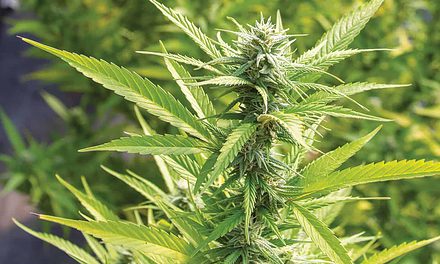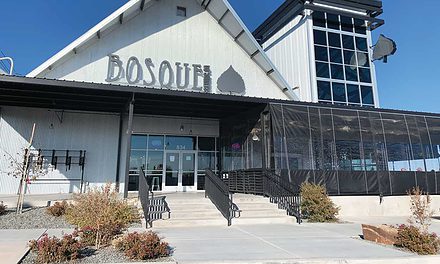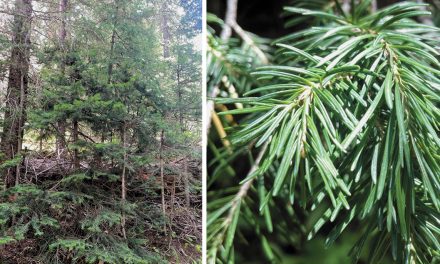“It’s never irresponsible to speak of hope. It’s irresponsible to give up.” —Barbara Kingslover, The Sun Magazine. Issue 459. March, 2014
~
Loretta Sandoval is a well-trained, long-time scientist, holding degrees in chemistry, biology and applied science from Colorado State University.
She’s also a seasoned, no-nonsense farmer intent on ushering her inherited native New Mexican culture’s practices of farming into the 21st century.
One would think the discrepancy of these two realities (the scientific vs. the mythic) would be a source of confusion and contradiction, but in Sandoval there is a rootedness in the knowledge of self that’s come from spending a lifetime with a foot in either world that’s allowed her to successfully weave them together.
Contradictions have been a constant theme in Sandoval’s life…Hispano/Anglo, Professional Woman/Business World, Outsider/Insider… throughout, she’s managed to navigate a course she not only controls, but first envisioned, and then methodically executed in an alchemical fusing of disparate realities into one thriving present.
Transmuting the Lead of Ordinary Experience into the Gold of Consciousness
Prior to the eighteenth century, Alchemy was the primary way in which humanity apprehended the universe. However, as the eighteenth century unraveled, alchemy found itself at odds with the ideals and openness of the enlightenment.
Coupled with the advent and surge of chemistry, alchemy ironically ended up embodying its motto of obscurum per obscuris, ignotium per ignotius (the obscure by the more obscure, the unknown by the more unknown).
The psychological projections of the inquiring alchemists against the vast darkness of the unknown universe became distorted by their fear of it; as if they were looking in a fun-house mirror.
Alchemy closed in on itself, resulting in the hermetic medieval philosophy most commonly known today, while chemistry morphed into natural science.
Unlike the medieval Alchemists, Loretta Sandoval’s background as a scientist gives her the confidence to look at, as well as work with the natural world with an eye towards the future. She has a firm grasp of how the universe around her works, choosing to fill it with hope, though, rather than fear.
Indeed, Loretta Sandoval is somewhat of an anomaly. Although a scientist, she doesn’t use science from a reductionist perspective.
In other words, she doesn’t see science as a “search for universal truths through presumptively value-neutral and objective experimental methods” – an approach that’s consistently separated facts from values – but, rather, as a way of taking the knowledge of the microscopic world and applying it to how the universe works.
In its search over the past several centuries for these “universal” truths, reductionist science managed to discount localized knowledge of one’s surroundings as voodoo or some other nonsense, while simultaneously attempting to conquer mother nature through pillaging and plundering of her natural resources, in the process displaying the same fear of the unknown the pre-enlightenment alchemists did when science began its inquiry into nature by attempting to present it as stable, when in fact its rather dynamic.
Conversely, Sandoval is attempting to fuse localized knowledge with scientific training. What she does is alchemy. Perhaps unintentional, perhaps by design, yet, whatever her motivation, she’s quietly and successfully achieving her goals and the proof is in the pudding every Saturday at Santa Fe Farmer’s Market.
All one need to do is visit her Zulu’s Petal’s Stand and procure some of her greens. It’s the sort of product one could find in a Michelin 3-star kitchen, yet, more impressive is that they’re produced from a desolate and remote part the world that has nearly been forgotten and that Sandoval and a handful of others have re-claimed single-handedly.
The Myth of the Perfect Past
The Embudo Valley cascades down from the tip of maternal Jicarita Peak which towers above at 12,835 feet, through the spectacular forest of the Santa Barbara Campground, the Pueblo of Picuris and the town of Peñasco, where it gradually opens up below in a small cañon that leads to the hamlet of Dixon and finally, the Rio Grande.
The Embudo River also flows from the mountain through the small cañon, where it is siphoned off into centuries old acequias (gravity -flow irrigation ditches created by the Spanish at the end of the sixteenth century) that feed a series of clandestine fields.
Heavily rutted, flood prone county roads of packed dirt connect the high road and Peñasco to the cañon and Dixon to the south. The area is exotically gorgeous and undoubtedly full of what New Mexican scholar, historian and cleric Fray Angelico Chavez refers to as a “Palestinian” quality. In other words, a high desert setting that one could easily project biblical history onto.
Indeed, such projection has been perpetuated in the Embudo Valley since Spanish arrival, those traditions having been woven into the ceremonial and farming calendars of the Pueblo, Apache and Comanche.
As time wore on and miscegenation ensued, localized knowledge inextricably became a part of the nascent colony. Farming techniques were shared between Spaniard and Pueblo, and soon the lexicon of Spanish annals included many Tiwa, Tewa, Zuni and other Pueblo words which described new genus and species.
For the Spanish settlers, the Embudo Valley held the promise of the risk they took in braving the incredibly arduous journey fraught with violence and a good deal of misfortune along the way. The access to clear, clean mountain water and rich soil came with a heavy price, though, as the constant raids from marauding Apache and Comanche would prove.
Yet, once rooted in the valley, the Spaniards would cling desperately to their new land, and over the centuries, became an inextricable part of the landscape. Sandoval’s parents hail from the area, although they moved to southern Colorado, where she was raised.
Although they left the valley physically, their hearts remained there, and as an adult, Sandoval has returned with a sense of the rich past of the place, and with an eye towards returning the land to its prior abundance.
In the mid-morning hours of a recent end-of-winter day, Loretta and I are slowly bouncing down a quiet dirt road en route to one of her fields with a dog she’s rescued in the back of the cab. Off in the distance to the north two sharp rocks jut out several hundred feet, demarcating a captivating box-canyon where the river flows mightily in the spring. The sky is a particularly deep azure blue, and against the muted tones of winter seems even more brilliant. It’s easy to see the allure of the place, although it’s evident by the decaying buildings and abandoned rusted out vehicles that dot the landscape that a serious energy shift is much needed.
As we bump along Loretta tells me the story of her family and her connection to this place, crediting the move here with saving her life in a way. Apparently, years earlier when she was immersed in Academia, she found that despite the acclaim and job security, she was deeply unhappy, creeping up on being dangerously overweight, trapped in a cubicle, and to top it all, was diagnosed with type-2 diabetes.
At fifty-five, she is lean and vibrant, having the energy to farm several plots simultaneously. She credits working with the land and eating her own produce with turning it all around. The type of person that likes to have all their ducks in a row, she uses her left-brained energy to manage her acreage, plotting it out like a periodic table.
Her background as a scientist serves her well when seeking grants, receiving several, most notably from the Natural Resources Conservation Service, part of the USDA. It’s all to the end of breathing life into the soils of this small piece of paradise, while reviving traditions from a culture that are on the brink of going the way of the dinosaur.
As we walk along a dormant field, Loretta is pointing out the small, nitrogen-building plants she’s put into the soil to help revive it. “Take a look at this soil,” she proudly proclaims, as she drops to a knee and brushes past the dusty topsoil, digs her fingers into the ground and scrapes out a handful that is rich and dark, full of life.
She springs to her feet and heads up the incline of the property past a field of winter rye also used for nitrogen building purposes, all the while laying out in intricate detail the field plan she’s in the midst of executing.
Her fields are all certified organic and she takes pride in that fact, their also a strange and heady collection of the past and future, as seventy-five year old heirloom apple trees stand sentinel over varying series of cover crops as the seasons progress.
Aside from the re-shifting of the natural landscape, Sandoval operates two greenhouses which produce the bulk of Zulu’s Petals produce and are marvels of cutting edge farming. She opens one of them up and invites me in with the caveat I’m not to go more than a foot or so inside, due to the ultra-pristine environment she cultivates inside for maximum growth.
While the fields are mightily impressive and are proving fertile ground for the propagation of the regal landrace Chile and other heirloom varieties, it’s the controlled environment of the greenhouse where Sandoval seems to come to life. After all, she sees the endeavor from the point of view of the scientist, and therefore relishes in the unseen world that makes things tick.
She’s also highly aware that the past has been both kind and unkind to her land. She knows there’s plenty of work ahead and that the “myth of the perfect past” is just that – a myth. Yet she’s got her sights set on a future that ushers in tradition in a way that fits into her time and is poised to make a mark in the future.
She’s eager to introduce her produce to those that don’t traditionally purchase fresh, organic food, and, ironically a majority of her neighbors fit into that category, hence her plan to open a farm stand in Dixon in the near future. Her hope is that the energy procured from the food might motivate a generation to change their eating habits, in the process spurring an interest into an agricultural past that was once thriving, and if Sandoval has her way, will be peaking again soon.












